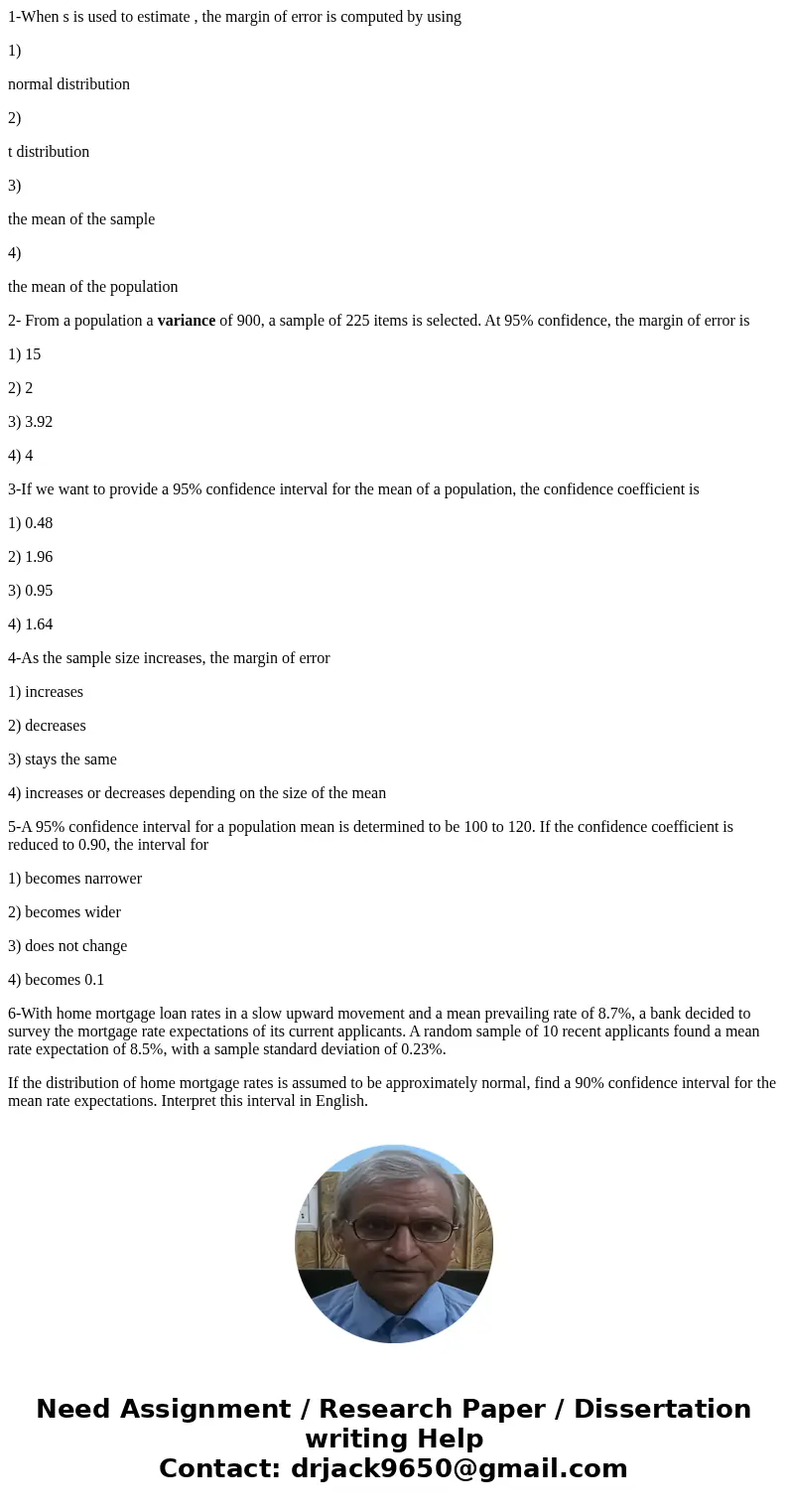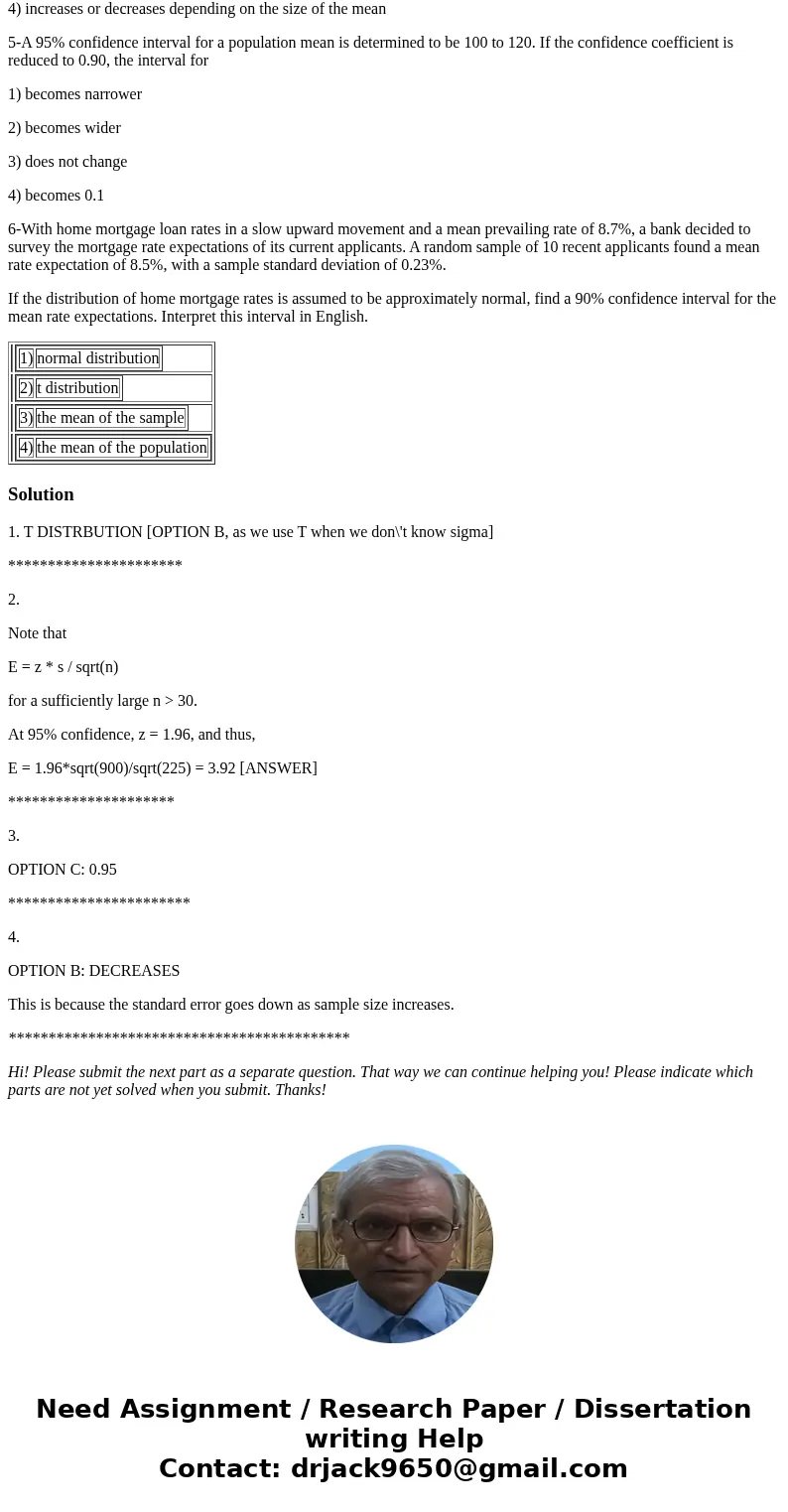1When s is used to estimate the margin of error is computed
1-When s is used to estimate , the margin of error is computed by using
1)
normal distribution
2)
t distribution
3)
the mean of the sample
4)
the mean of the population
2- From a population a variance of 900, a sample of 225 items is selected. At 95% confidence, the margin of error is
1) 15
2) 2
3) 3.92
4) 4
3-If we want to provide a 95% confidence interval for the mean of a population, the confidence coefficient is
1) 0.48
2) 1.96
3) 0.95
4) 1.64
4-As the sample size increases, the margin of error
1) increases
2) decreases
3) stays the same
4) increases or decreases depending on the size of the mean
5-A 95% confidence interval for a population mean is determined to be 100 to 120. If the confidence coefficient is reduced to 0.90, the interval for
1) becomes narrower
2) becomes wider
3) does not change
4) becomes 0.1
6-With home mortgage loan rates in a slow upward movement and a mean prevailing rate of 8.7%, a bank decided to survey the mortgage rate expectations of its current applicants. A random sample of 10 recent applicants found a mean rate expectation of 8.5%, with a sample standard deviation of 0.23%.
If the distribution of home mortgage rates is assumed to be approximately normal, find a 90% confidence interval for the mean rate expectations. Interpret this interval in English.
| |||
| |||
| |||
|
Solution
1. T DISTRBUTION [OPTION B, as we use T when we don\'t know sigma]
**********************
2.
Note that
E = z * s / sqrt(n)
for a sufficiently large n > 30.
At 95% confidence, z = 1.96, and thus,
E = 1.96*sqrt(900)/sqrt(225) = 3.92 [ANSWER]
*********************
3.
OPTION C: 0.95
***********************
4.
OPTION B: DECREASES
This is because the standard error goes down as sample size increases.
*******************************************
Hi! Please submit the next part as a separate question. That way we can continue helping you! Please indicate which parts are not yet solved when you submit. Thanks!


 Homework Sourse
Homework Sourse